
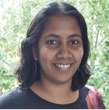

Dr. Peart’s research program focuses on understanding how mRNA processing and the modulation of this process influences cell fate and contributes to tissue development and disease.

My research is focused on understanding the evolution of RNA viruses such as SARS-CoV-2 and HIV-1, and the host responses to infection using next-generation sequencing and Bioinformatics tools.





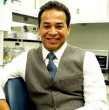
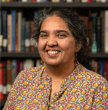


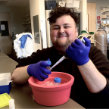

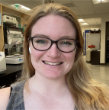

(Chair November 2020- December 2023)


RNA Society DEI Resources
Mentoring Resources
|
Equity, Diversity, & Inclusion, eLife 2021 |
Royal Society of Chemistry Diversity policy |
Life in a lab full of unique RNA bases
In the 19th and early 20th century, an RNA base could only be purine or pyrimidine. Any base that self-identified as something more complex, something different was hiding behind the identity of a canonical adenine, cytosine, guanine or uracil.
Every purine had to base pair with a pyrimidine. Purine-purine and pyrimidine-pyrimidine pairs were strictly forbidden. Any RNA base that preferred to spend its mature age alone and refused pairing was considered structurally disruptive.
RNA biology has seen immense changes the recent years. Base pairing with your own kind became accepted. Scientists started to show intense interest in cytidine-uracil base pairs, and celebrated their existence as they allowed the correction of their previous, erroneous structure predictions.
RNA biologists discovered hundreds of RNA modifications and realized that the binary classification is outdated. Being different, being unique became the new hype. Everyone wanted to discover a new kind of modified base and get a peek into their exciting, glamorous, frivolous lives.
The world is not yet perfect. If one wants to predict the structure of an RNA molecule using an online algorithm, they can choose to disallow C-U base pairs. But all we get from such a homophobic behavior is bad research, as they will choose each other’s company over and over again anyways.
Another recent issue is, apparently, that RNA bases like to be in the center of attention. Forced into the background of their special peers, simple adenine, cytosine, guanine and uracil bases couldn’t accept to be considered boring. Suddenly, every adenosine wanted to be a methyl-adenosine, every uridine a pseudouridine. When researchers look for truly special, modified RNA bases, crowds of the regular ones jump on their hook and pretend to be someone else. Luckily, scientists persist to rigorously separate the wheat from the chaff.
I happen to be a bit like a 1-methyl-3-α-amino-α-carboxyl-propyl-pseudouridine. A rare, strange specimen, hard to find, hard to identify, impossible to understand. An atheist Jew from Eastern Europe, who called five countries her home the last ten years. An independent, individualist RNA base who never wanted the boring life of a paired base. And now, hopelessly in love with a modified base possibly even more peculiar than myself.
I consider myself extremely lucky. I found a lab where being an RNA modification is not only accepted, but encouraged. A place, where everyone is unique and special, everyone can accumulate as many methylations, acetylations and hydroxylations as they wish. Where everyone is encouraged to base pair with whoever they feel to be their best fit.
Diversity having a positive impact on absolutely everything it touches is considered as a cliché by now. In my experience though, true diversity is hard to find, as people tend to adapt to the culture, the community they become part of. True diversity is hard to find, because despite many idealists claiming otherwise, working in a group where no one understands your mother tongue, no one knows your favorite food or understands the meaning behind your culture’s holidays and traditions is challenging. Somehow, in our lab, diversity does work, and its positive effect on research is enormous.
When everyone was trained in a different country, with a different mindset, when everyone thinks and behaves differently, creativity skyrockets. If I get stuck with a project and need some advice, the width of different ideas I receive repeatedly surprises me. And at the end, if none of those ideas lead anywhere, my lab mates can cheer me up with delicious Indian food, a Chinese New Year celebration or a vivid lunchtime discussion on death sentence in different cultures.
I believe that in our lab, everyone can feel at home, feel to belong there, no matter how different we are. It’s a group of fourteen people with eleven different citizenships. A workplace where the orthodox religious works with the hardcore atheists, the left wing voter with the right wing, the single with the father of five.
And we all work towards the same goal. To understand the exciting, glamorous, frivolous lives of RNA modifications.
– the author would prefer to remain anonymous
Provide suggestions of how the RNA Society could enhance diversity, equity & inclusion within our community.
When asked how the RNA Society could enhance diversity, equity, and inclusion (DEI) in STEM, I had a simple question: what are other scientific societies doing? To answer this, I investigated 20 scientific societies and enumerated what approaches to equity, diversity, and inclusion they promoted via their websites.
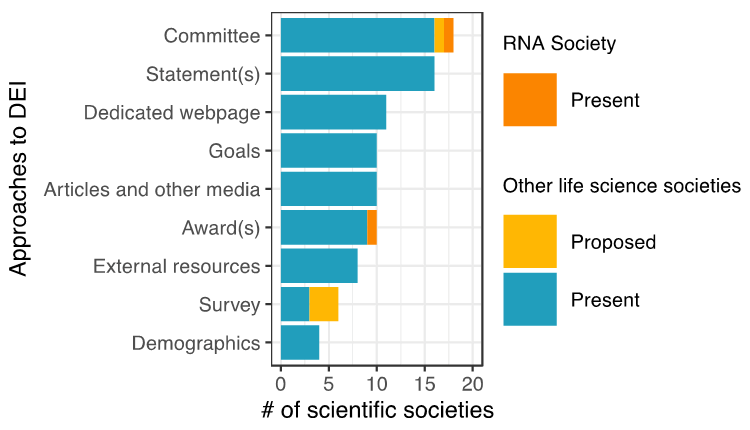
Clicking through a society’s website does not give a full understanding of its impact on diversity, equity, and inclusion, but a number of common strategies quickly become apparent.
Figure 1: Approaches to diversity, equity, and inclusion either featured on the RNA Society website or found on 20 other life science society websites.
The most popular strategy was to form a diversity committee. 17 of 20 societies I surveyed – as well as the RNA Society – recognized some form of standing diversity committee on their website (Figure 1). Forming a committee is an easy way to get started and catalyze future DEI strategies.
Most societies featured a dedicated webpage to DEI information (Figure 1). While one could imagine blending DEI with content on mentorship, advocacy, leadership and outreach, most society websites maintain distinct tabs or sections. In other words, adopting an explicit and distinct DEI framework is now mainstream in STEM.
The RNA Society could join the majority of basic life science societies in hosting a dedicated DEI webpage. But what kind of content would it host? Approaches commonly employed by other societies offer some hints. The most popular type of content is a statement establishing society expectations with respect to DEI or responding to current events (Figure 1), often by prohibiting discrimination on the basis of characteristics like age, race, ethnicity, gender identity, national origin, disability, religion, class background, or sexual orientation. Around half of societies publish DEI-related media (articles, interviews, infographics, webinars, panels, and more), set goals for representation of women and minorities in society leadership or conference sessions, and issue awards for excellence in DEI (Figure 1). The RNA Society has begun a prize for excellence in inclusive leadership but has not yet published DEI media or society goals.
Other types of content featured on a minority of society websites might be especially attractive to the RNA Society. External DEI resources, society survey results, and society demographics can answer common questions more completely and rigorously than original articles from society members. Examples of particularly illuminating content I encountered include social science studies on the efficacy of DEI programming, comparisons of society survey results to STEM worker demographics, and summaries of organizations for historically excluded groups, from the International Society for Computational Biology, the American Society for Microbiology and the American Society for Biochemistry and Molecular Biology, respectively.
External resources can take many forms: publications on underrepresentation in STEM and possible interventions, tips on professional development or networking, and links to helpful organizations. Ultimately, there is an ocean of rich content available online; the hard part is knowing what content would be most helpful to community members. Comprehensive, up-to-date reviews of workplace discrimination and countermeasures literature address common questions about how best to enhance DEI in professional settings (Gosztyla et al. 2021; Paluck et al. 2021). University webpages can be a helpful source of guidelines for teachers and mentors, such as respectful approaches to gender identity (University of Oregon). In some cases, entire websites might target issues relevant to RNA Society researchers, such as disparities in research funding (Funders’ Learning Community).
Climate surveys inviting self-reporting of unsafe or disrespectful conduct in the workplace have emerged as a crucial tool in understanding and counteracting disparities in STEM. Adopters include departments (Stachl et al. 2021), academic offices (UCSD 2021), schools (Stanford Medicine 2018), universities (University of Michigan; University of Iowa 2020; University of California), scientific societies (ASM DEI Task Force 2020), and researchers coordinating across scientific societies (Cech and Waidzunas 2021). These surveys have yielded results that might upend expectations for the preferences and perceptions of women and minorities in STEM. For example, holding talks on LGBTQ+ health and having identifiable queer leadership were favored over enacting policy changes for sexual and gender minorities at Stanford Medicine, and concerns about insufficient postdoctoral scholar pay exhibited the largest disparity between LGBTQ+ and heterosexual postdoctoral scholars at UC San Diego.
Reporting society demographics can also facilitate greater DEI in RNA research. Society demographics can provide a benchmark for assessing representation for conference sessions and inviting speakers. Most reports suggest that membership of life science societies resemble the STEM workforce overall, but disaggregating members into subfields can expose large variation: a recent study found that members of the American Society of Human Genetics were 45% women, but that 27% of members studying computational approaches were women and 67% of members studying genetic counseling were women (Telis et al. 2019). In my own experience organizing an RNA session at the American Society of Human Genetics, I struggled to assemble a list of diverse speakers. My preliminary list from browsing conference proceedings, alumni pages, and relevant literature was 25% women. This was slightly lower than the 28% women among full professors reported by the National Center for Science and Engineering Statistics (NCSES). Looking back, I wish I had more relevant benchmarks. Published RNA Society membership demographics could inform those like me hoping to equitably recruit RNA scientists.
To be sure, undertaking more approaches to equity, diversity, and inclusion is not necessarily better. Parallel approaches can be partially redundant, and a single helpful resource is more valuable than multiple unhelpful ones. If in doubt, a task force or member survey can identify the most pressing needs. Regardless of what steps RNA Society leadership takes first, I encourage all members of the RNA Society to take time to review DEI research and experiment with tested strategies. We should not feel obligated to solve challenges in DEI alone: a diverse, equitable, and inclusive praxis no doubt involves exchanging ideas with other organizations.
- Evan Boyle @evaubo
References
ASM DEI Task Force. 2020. Diversity, Equity and Inclusion Task Force Report. American Society for Microbiology https://asm.org/ASM/media/AM-Governance/BOD-Letter-Diversity-Equity-Inclusion-Taskforce-Report-Final.pdf?ext=.pdf.
Cech EA, Waidzunas TJ. 2021. Systemic inequalities for LGBTQ professionals in STEM. Sci Adv 7. http://dx.doi.org/10.1126/sciadv.abe0933.
Funders’ Learning Community. Funders’ Learning Community. Funders’ Learning Community. https://wtgflc.wpengine.com/ (Accessed February 25, 2022).
Gosztyla ML, Kwong L, Murray NA, Williams CE, Behnke N, Curry P, Corbett KD, DSouza KN, Gala de Pablo J, Gicobi J, et al. 2021. Responses to 10 common criticisms of anti-racism action in STEMM. PLoS Comput Biol 17: e1009141.
NCSES. Women, Minorities, and Persons with Disabilities in Science and Engineering. National Center for Science and Engineering Statistics. https://ncses.nsf.gov/pubs/nsf21321/data-tables#group6 (Accessed February 25, 2022).
Paluck EL, Porat R, Clark CS, Green DP. 2021. Prejudice Reduction: Progress and Challenges. Annu Rev Psychol 72: 533–560.
Stachl CN, Brauer DD, Mizuno H, Gleason JM, Francis MB, Baranger AM. 2021. Improving the Academic Climate of an R1 STEM Department: Quantified Positive Shifts in Perception. ACS Omega 6: 14410–14419.
Stanford Medicine. 2018. Report on Needs of the Sexual and Gender Minority Community at Stanford Medicine. Office of Faculty Development and Diversity. https://med.stanford.edu/content/dam/sm/faculty-diversity/documents/Metrics/SGM-Report_2018_Final.pdf (Accessed February 25, 2022).
Telis N, Glassberg EC, Pritchard JK, Gunter C. 2019. Public Discussion Affects Question Asking at Academic Conferences. Am J Hum Genet 105: 189–197.
UCSD. 2021. Postdocs@UCSD Survey. Office of Postdoctoral Scholar Affairs. https://postdoc.ucsd.edu/postdocs/postdoc-data.html (Accessed February 25, 2022).
University of California. Campus Climate Survey. University of California Office of the President. https://www.ucop.edu/institutional-research-academic-planning/services/survey-services/CCS.html (Accessed February 25, 2022).
University of Iowa. 2020. 2020 Campus Climate Survey. Division of Diversity, Equity, and Inclusion. https://diversity.uiowa.edu/reports/2020-campus-climate-survey (Accessed February 25, 2022).
University of Michigan. Climate Survey. Office of Diversity, Equity and Inclusion. https://diversity.umich.edu/data-reports/climate-survey/.
University of Oregon. Promoting Inclusive Classrooms: LGBTQIA+ Ally Guide. University of Oregon Office of the Dean of Students. https://dos.uoregon.edu/ally-tips-faculty-staff (Accessed February 25, 2022).
Feedback from the community
We welcome your feedback. Please contact us via the RNA Society contact form or at dei@rnasociety.org.